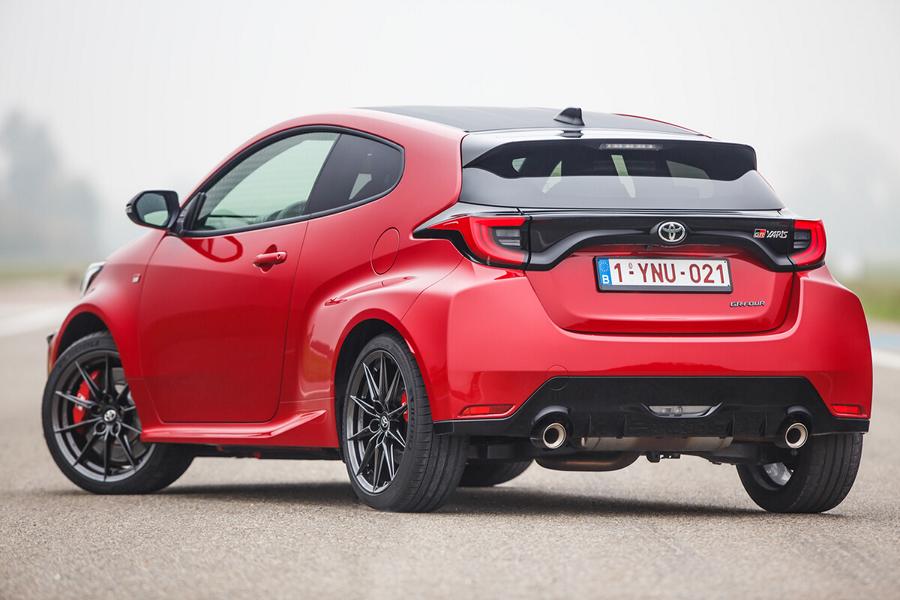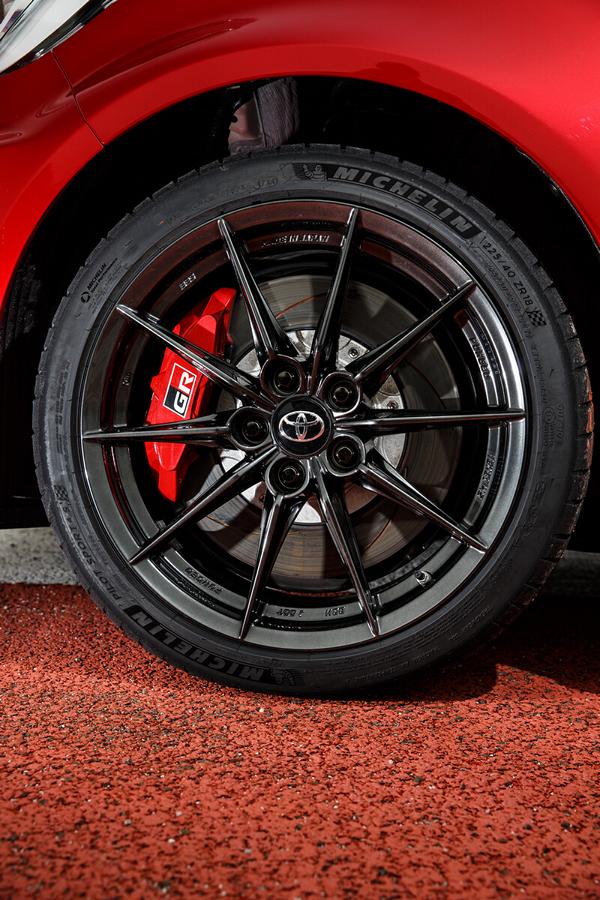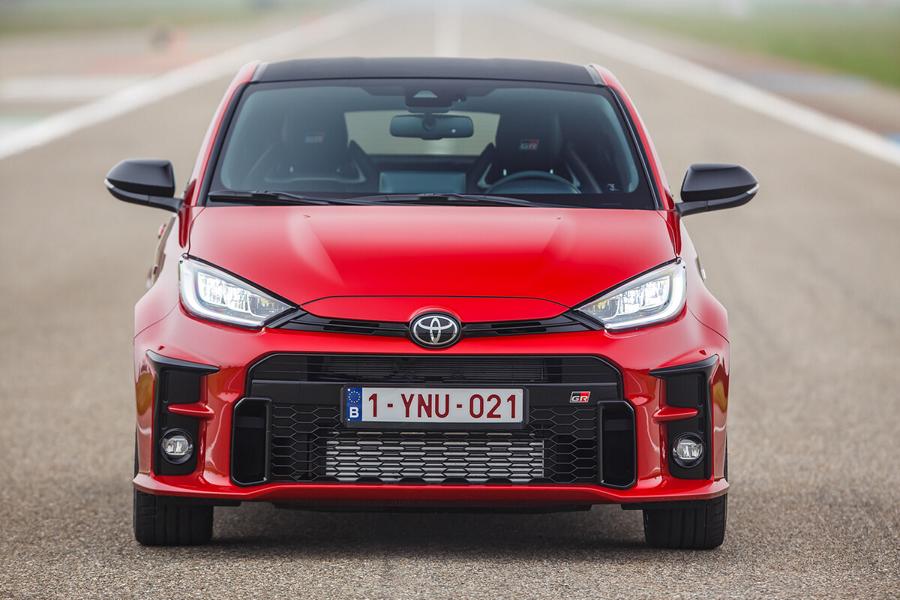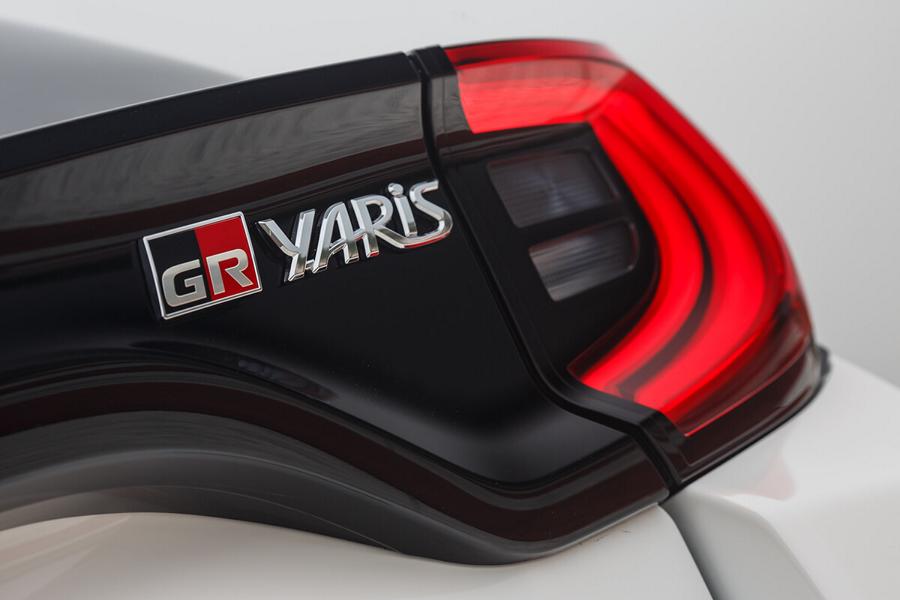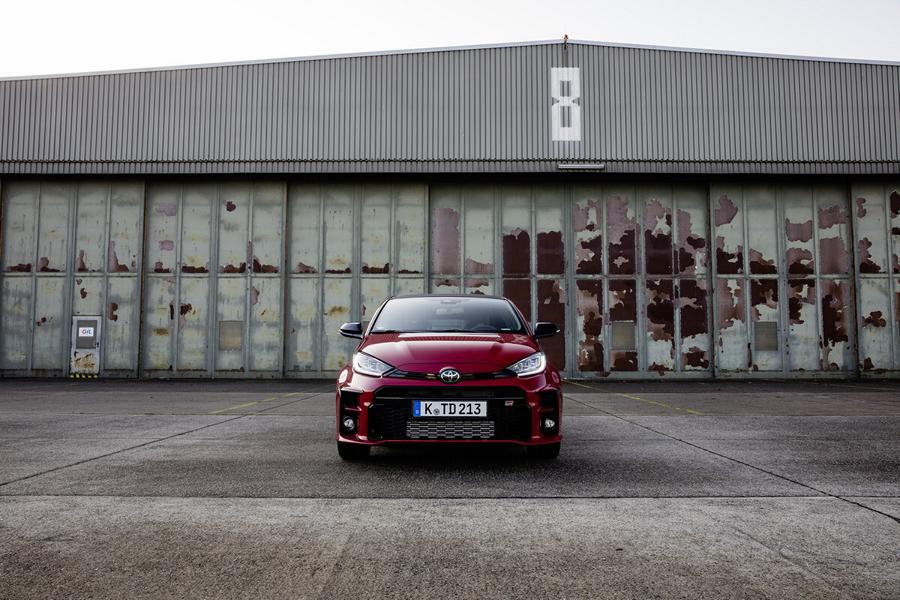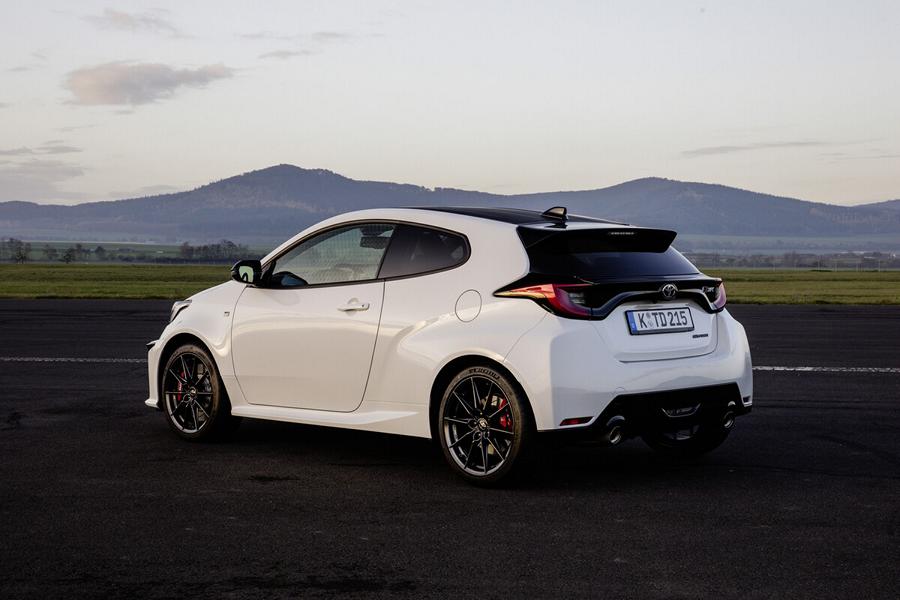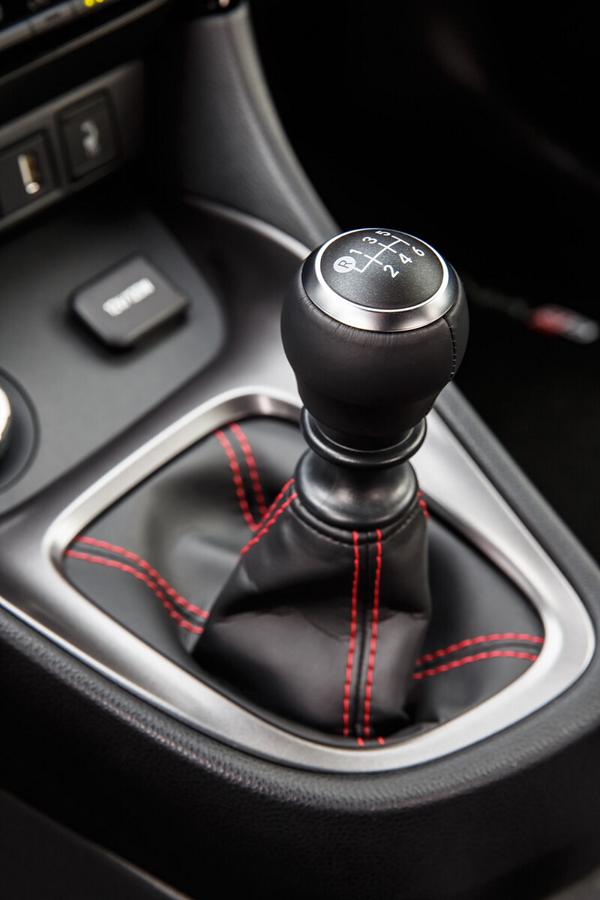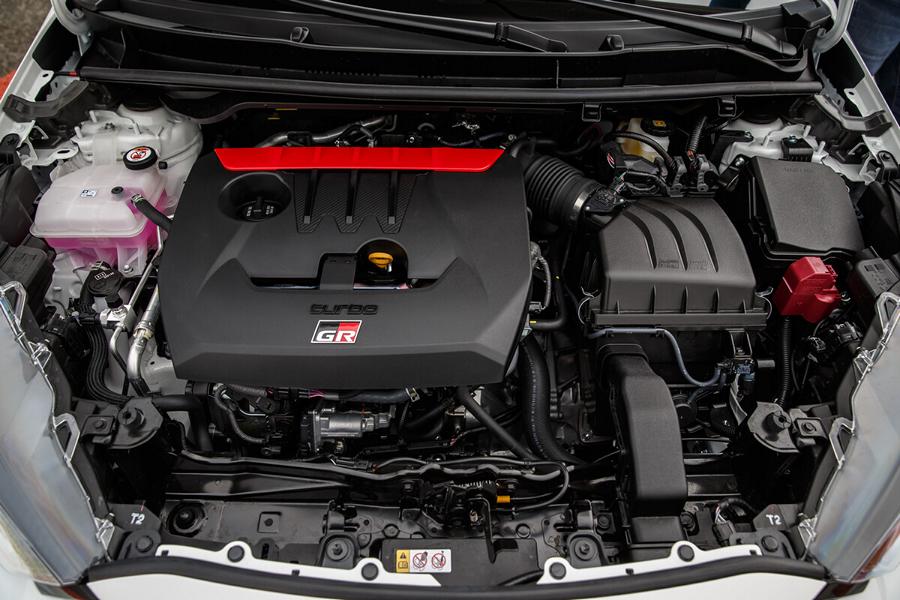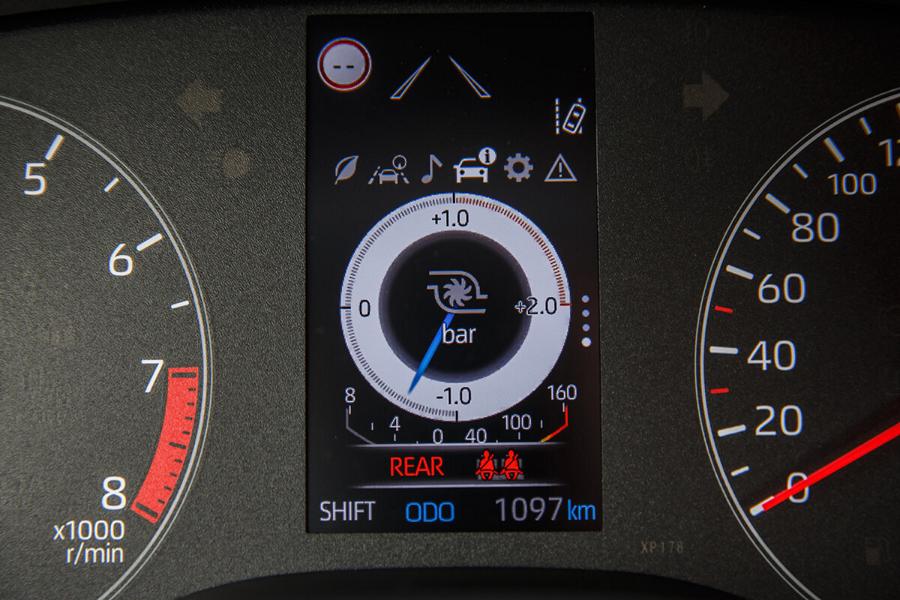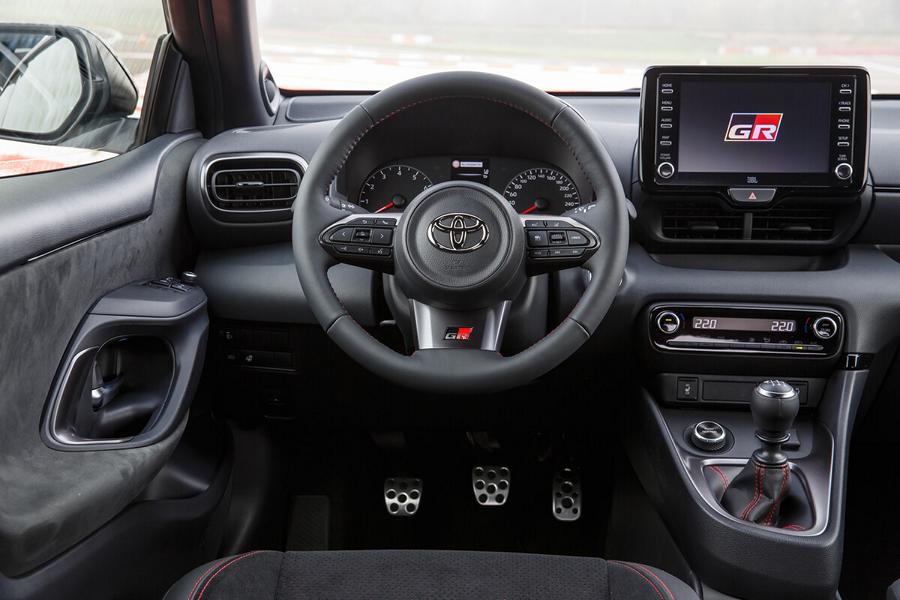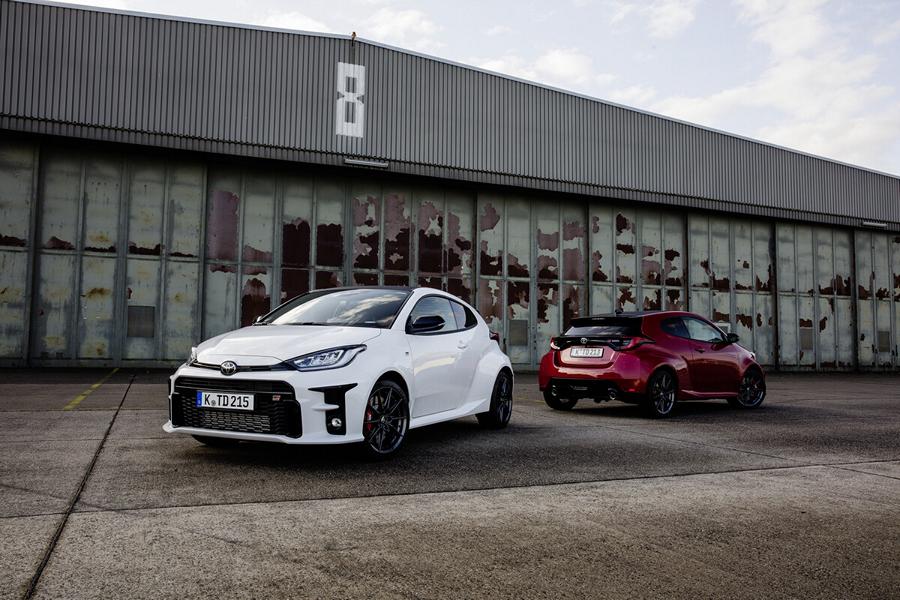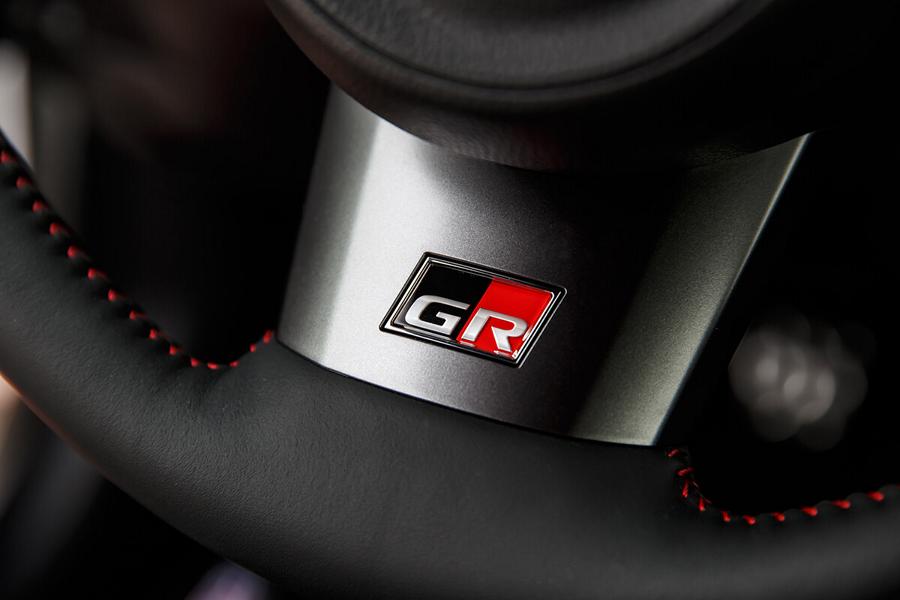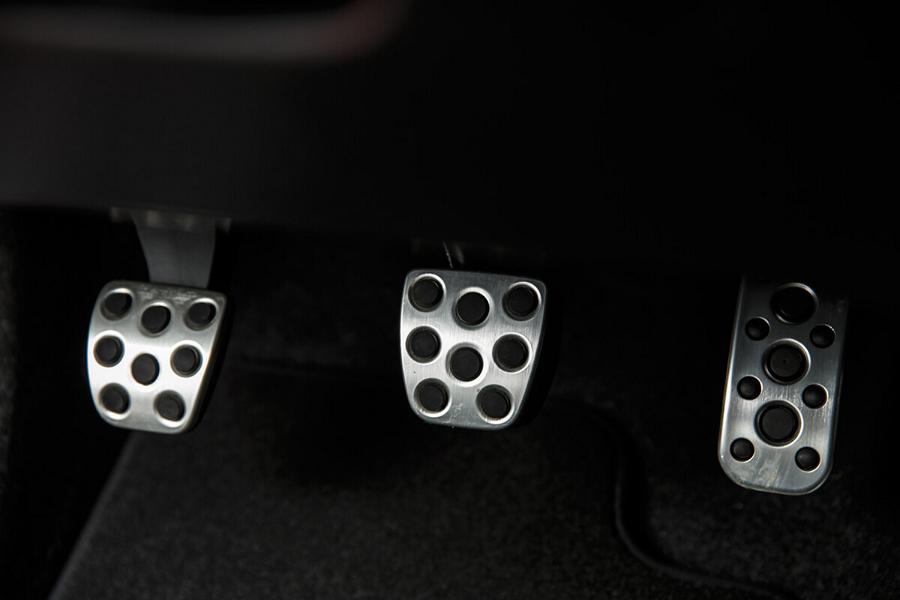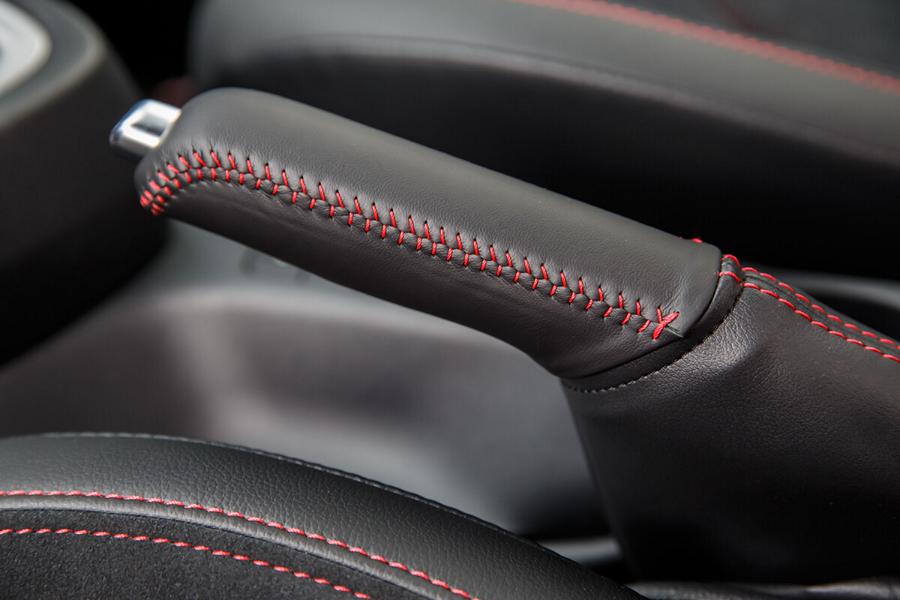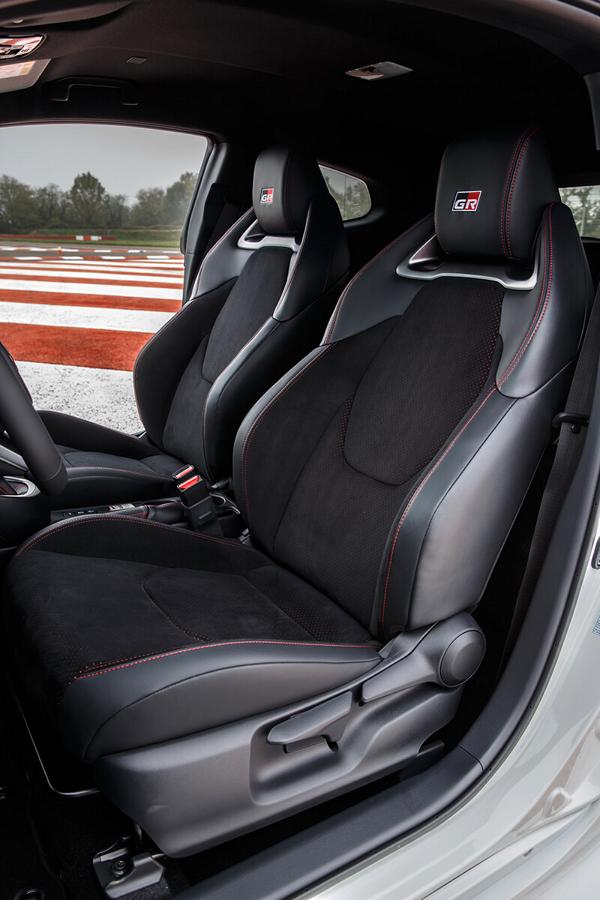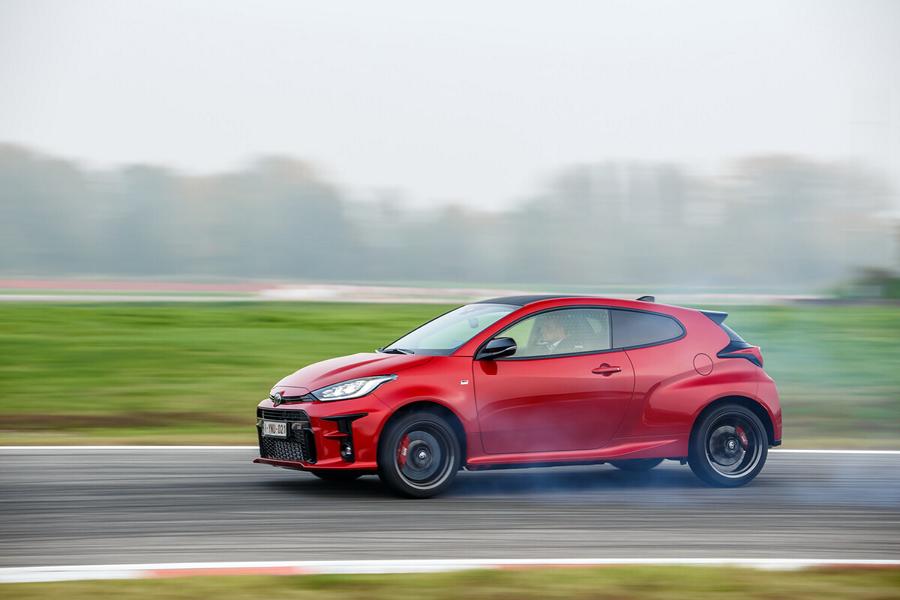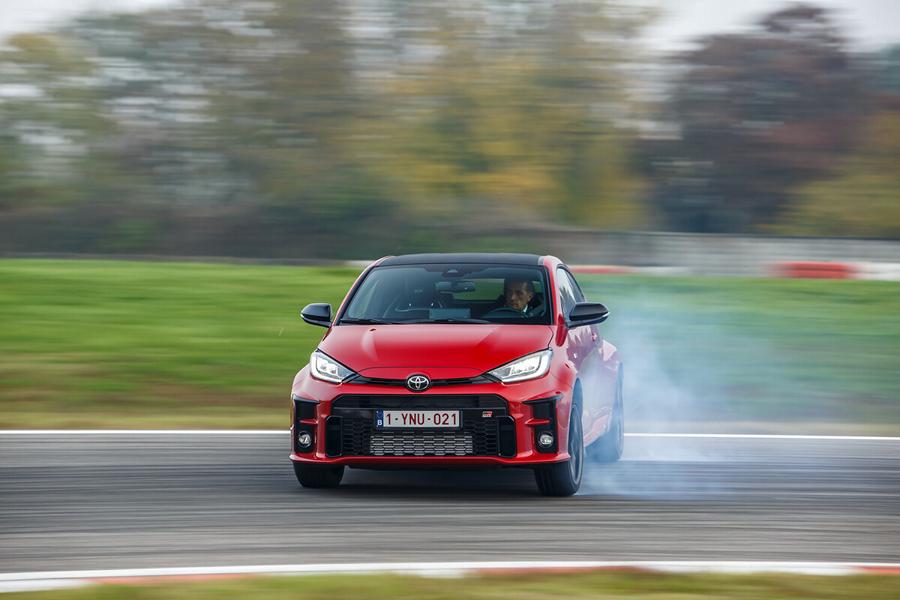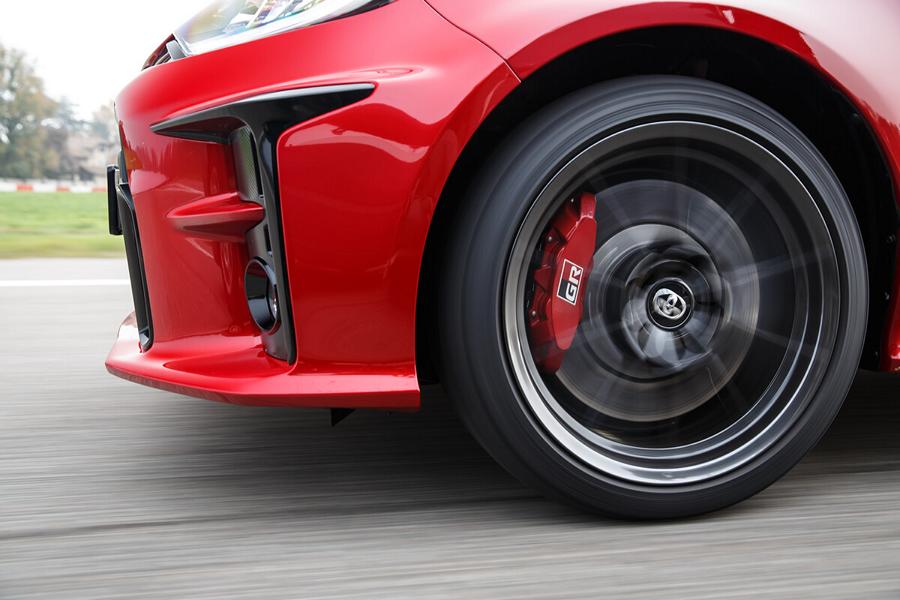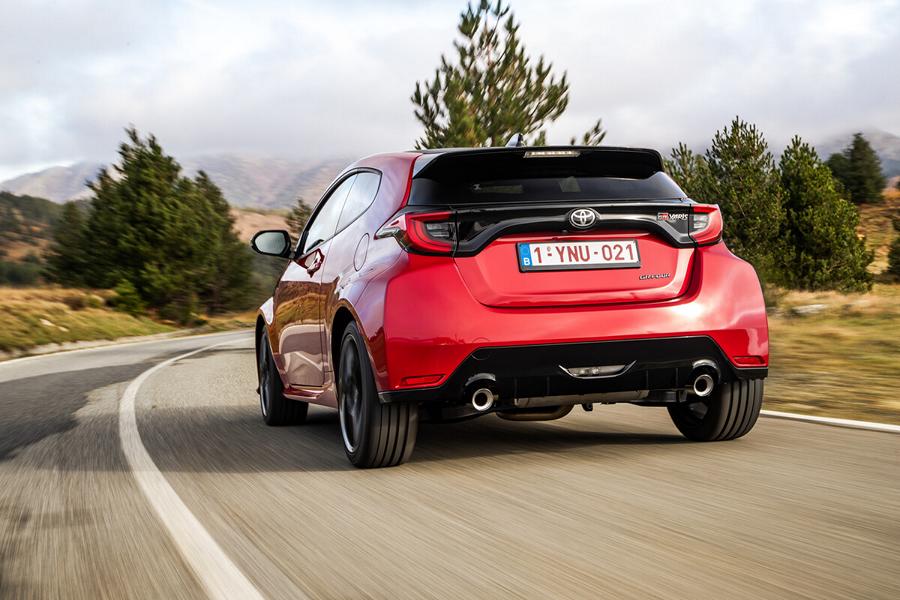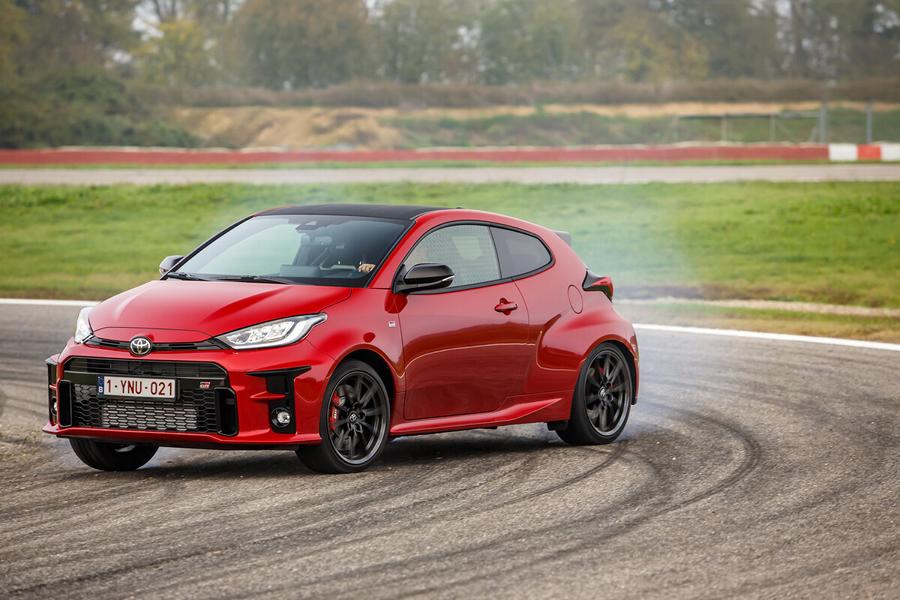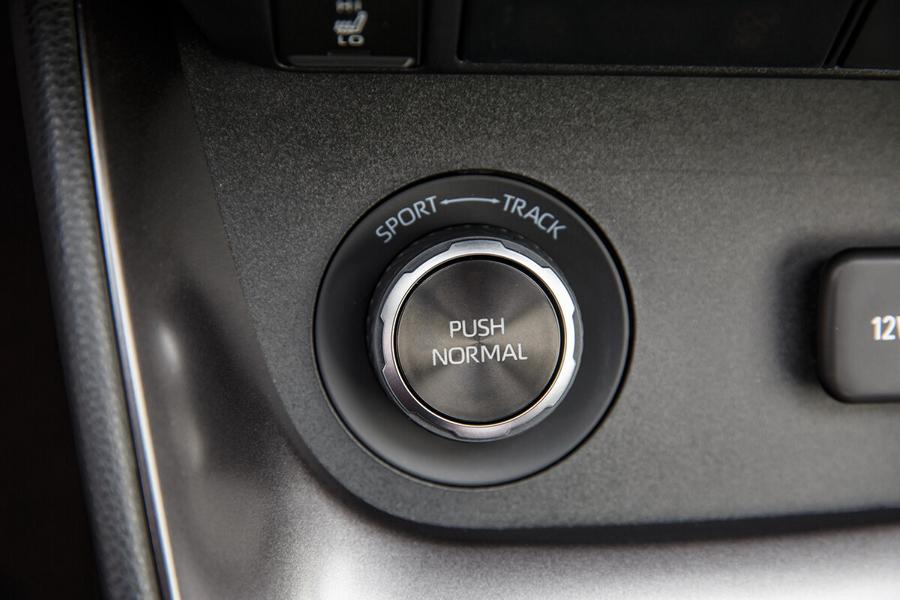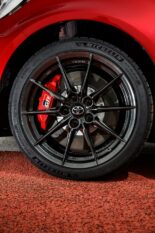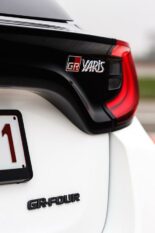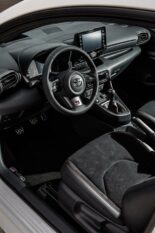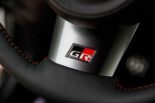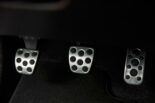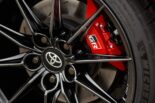Recently updated on April 23, 2021 at 07:01 am
When Toyota announced its return to the FIA World Rally Championship in 2015, the development of a production vehicle inspired by rally involvement was already part of the concept. The aim was to use the know-how gathered at the highest level of motorsport and the experience gained from the world's most demanding rally tracks for a new road model. It should represent an inexpensive option for customers who also like to drive their car in a sporty manner and which is suitable as a basis for competitive use. The first real sports vehicle that Toyota designed and built itself in 20 years: For Akio Toyoda, the company's President, this was a very personal concern. After winning the manufacturer's title in the first season of the comeback in the FIA World Rally Championship, it was intended to underline the competence of the car manufacturer.
second model that is available worldwide
Now this vehicle is in the starting blocks for its German premiere: The GR Yaris, completely redesigned and constructed to be competitive at the highest level. After the successful GR Supra, which was presented in 2018, it is already the second model from the GR family that Toyota is launching worldwide. Fundamental challenges had to be mastered for a vehicle with this high level of technology, which at the same time represents a serious and attractive purchase option for customers. In order to better understand the ambitious goals that can and must be achieved, the GR Yaris project team has worked closely with the specialists from Tommi Mäkinen Racing right from the start - the team responsible for the World Rally Car based on the previous Yaris generation and the Responsible for appearances in the World Rally Championship. This detailed and intensive process has brought a remarkable result to light: a fascinating automobile that comes up with an almost ideal combination of lightweight construction, an agile and responsive chassis, a torsion-resistant chassis and a powerful engine that is also particularly compact.
high-precision tuning of the GR Yaris
The high-precision tuning of the GR Yaris benefits enormously from the feedback that professional drivers have provided during tests with prototypes - including the drivers of the TOYOTA GAZOO Racing World Rally Team and Akio Toyoda himself in his expert role as Toyota Master Driver. The GR Yaris is based on a special basic architecture. It combines the new GA-B chassis from Toyota, introduced with the latest Yaris model generation, with the rear axle components of the GA-C platform of the Corolla and C-HR. The particular importance that the rally team attaches to weight optimization is reflected in numerous body components made of aluminum and a roof section made of carbon fiber composites. Practically every single component of the GR Yaris had to undergo a meticulous test in order to save more pounds.
In order to achieve the best possible aerodynamic performance, the GR Yaris, which is otherwise based on the hatchback model, received another unique selling point: a three-door instead of five-door body with a flatter roofline that tapers towards the rear. It optimizes the flow to the rear wing. In modern rally vehicles - which have to correspond to the production model in these points - this important detail helps to generate as much downforce as possible on the rear axle. As with the competition model, the design of the lower body area in the production version also ensures an efficiently channeled air flow along the vehicle flanks.
The GR Yaris' high-performance three-cylinder is also new. With 192 kW / 261 PS and a maximum torque of 360 Nm, it is the most powerful unit of its kind and also the slimmest and lightest 1,6-liter turbo engine. It fully complies with the basics of the technical regulations for the WRC2 class, the second division in the World Rally Championship. It helps the production model achieve remarkable performance: the sprint from standstill to 100 km / h takes just 5,5 seconds, the top speed is electronically limited to 230 km / h. In terms of design, it draws on modern racing technology, such as piston crown cooling via multi-nozzles, exhaust valves with a large diameter and a turbocharger with single-scroll ball bearings. And since the GR Yaris only weighs 1.280 kilograms, it can come up with an extremely high-performance power-to-weight ratio of 4,9 kilograms per hp.
The permanent, electronically controlled GR-FOUR all-wheel drive newly developed by Toyota ensures the power transmission. Derived from racing, it offers three different options for distributing engine torque between the front and rear axles - normal, track and sport.
DESIGN AND CONCEPTION
- Development of the series model kept the requirements of a base vehicle for international rally operations in mind
- The body of the GR Yaris only shares headlights and taillights, exterior mirrors and roof antenna with the Yaris sister models
- With its flat roofline, the three-door offers the best prerequisites for the competitive aerodynamics of a rally variant
- A cockpit geared towards the driver supports a sporty pace
Exterior design
With the basic conception of the new GR Yaris, the designers from Toyota and the specialists from Tommi Mäkinen Racing, the partner of TOYOTA GAZOO Racing in the World Rally Championship, followed a clear task: It should redefine the limits for the performance of the production car. At first glance, the most striking difference between the two model variants is the change from a five-door to a three-door body, which gives it a unique selling point in the current product range. Although the GR Yaris is principally based on the current hatchback model, it shares little more with the five-door model than the headlights, taillights, exterior mirrors and the shark fin antenna on the roof. All other components of the outer skin were redesigned in order to achieve the ambitious goals in terms of downforce, aerodynamic efficiency and stability - a logical step against the background of the technical World Rally Championship regulations, because the regulations do not allow any modifications to the underlying body.
This is also reflected in the external dimensions. With an unchanged wheelbase of 2.560 mm, the GR Yaris measures 3.995 mm and is exactly 55 mm longer than the original version. The redesigned front and rear sections enlarge the front and rear body overhangs by 40 and 15 millimeters respectively. And in terms of width, the three-door model exceeds the base model by 1.805 mm at 60 mm, while the vehicle height is 1.455 mm lower at 45 mm.
The aerodynamics of the GR Yaris benefit from a roof line that is 95 mm flatter at its rearmost point compared to the standard model. This adapted profile optimizes the airflow to the massive rear wing of the World Rally Car, which in this way can generate greater contact pressure for the rear axle. The air duct in the lower body area, past the front wheel arches and along the flanks, serves a similar purpose.
With its typical GR design motif of the “functional matrix”, the bow of the series vehicle underlines the determination of the project. The generously dimensioned, rectangular radiator grille with the wide-meshed honeycomb grille supplies sufficient fresh air to the engine compartment as well as the water and charge air coolers. The shape of the distinctive front spoiler generates downforce and, with its raised middle section, controls the airflow below the car. Wing elements cleverly integrated into the front corners of the vehicle act like so-called canards - they gain downforce when cornering, while the vertically arranged openings on the outside of the front apron supply the brakes and the intercooler and provide support for the circular LED fog lights. Discreet "GR" logos in the front grille, on the side of the front fenders and on the tailgate discreetly indicate the potential of this model.
The tapering shape of the roof and the C-pillars, in conjunction with the large rear spoiler mounted high above, is entirely at the service of aerodynamic efficiency and downforce. Together with the wide track, the wide rear fenders underline the self-confident appearance and the flat silhouette of the GR Yaris. On the rear, they flow into a comparatively flat surface with minimized radii in order to calm the air flow behind the vehicle and in this way to reduce air resistance. Their aerodynamic effect is enhanced by the improved design of the diffuser element in the rear apron.
The developers also paid great attention to the aerodynamically effective cladding of the underbody. It covers the engine as well as the left and right sides of the vehicle. Specifically integrated slots in front of the wheels calm the air turbulence in the wheel arches.
The GR Yaris is available in four body finishes, which are based on the colors of TOYOTA GAZOO Racing. In the standard paint finish Snow White, Precious Black Metallic, Platinum White, pearl effect and Karmina Red Metallic (3-layer paint).
interior design
With dark silver accents for the door handles, the three-spoke leather sports steering wheel, the center console and the air vents, the elegant black interior clearly indicates the exceptional performance of the GR Yaris. The driver's cockpit makes this particularly clear. The shape of the 4,2-inch TFT multi-information color display on the instrument panel is basically the same as that of the standard model, but it comes with additional functions - be it a display for the boost pressure or the GR-FOUR all-wheel drive system that indicates the current torque distribution . The two analog round instruments for speed and speed impress with their elegant, simple design with white numerals and red pointers.
The specialists from Toyota positioned the gearshift lever of the manual transmission 50 millimeters higher. In this way, it moves closer to the steering wheel and is even easier to reach for quick gear changes with short, sporty shift travel. As is usual with rally vehicles, the GR Yaris has a conventional handbrake lever. If it is pulled, a special function of the GR-FOUR differentials decouples the rear axle drive.
The selector switch of the GR-FOUR system is located directly in front of the gear lever. There it is easy to reach if the driver wants to switch between normal, sport and track modes.
The luggage compartment has a volume of 174 liters. With the rear seat backs folded forward, it offers enough space for four large spare wheels or a bicycle. In favor of a more even weight distribution, the starter battery was moved under the trunk floor next to the tire repair kit.
LIGHTWEIGHT CONSTRUCTION ENJOYS PRIORITY
- Low weight as the key to the convincing handling properties of the new GR Yaris
- Light materials such as aluminum are used for the vehicle structure, while the roof section consists of carbon fiber composites
- Exceptional power-to-weight ratio of only 4,9 kg per hp
One of the main focuses of the GR YARIS development was on the lowest possible vehicle weight - without compromising on safety and stability. This rigorous approach has also had a major impact on the basic design and has led to the extensive use of particularly light materials and materials in key areas. With success: The powerful turbo all-wheel drive only weighs 1.280 kg when empty and can therefore come up with an extremely sporty power-to-weight ratio of just 4,9 kg per hp.
Body
The GR Yaris is the first production model from Toyota with a roof made of woven carbon fiber material. Compared to a conventional steel component, this C-SMC material (Carbon Sheet Molding Compound) saves 3,5 kg at a point that is particularly important for the center of gravity of the car.
Toyota manufactures the bonnet, tailgate and doors from aluminum, which results in a weight reduction of a further 24 kg. Overall, the proportion of aluminum in the body of the GR Yaris is around ten kilograms. As a result, it weighs 38 kg less than that of the corresponding Yaris predecessor model. High-strength and ultra-high-strength steels are used at particularly sensitive points on the vehicle. On the one hand, they serve as a guarantee for the unchanged high level of crash safety of the three-door car, while on the other hand, they enable the use of thinner and therefore lighter metal in other segments
Hardtop doors with frameless panes, revised tailgate, lightweight rear apron
Both the doors and the tailgate of the GR Yaris have a special meaning: they have to be adopted in their basic design for the World Rally Car, which will be based on the new three-door model. That is why they are made of particularly light aluminum and are characterized by a so-called hardtop design - the frameless side windows are almost flush and stepless with the body. So they hold tight even at higher speeds without additional reinforcements.
The tailgate, in turn, has been adapted to the slimmer roof line of the GR Yaris. It has inner and outer panels made of aluminum, which also reduce weight. The rear apron is made of so-called TSOP plastic (Toyota Super Olefin Polymer), which enables a more delicate construction and therefore weighs 38 percent less than conventional components. TSOP can also be easily recycled and thus also offers environmental benefits.
The high performance package of the GR Yaris also includes forged light alloy wheels with extra stable spokes. You save significant kilograms in the area of unsprung masses.
DRIVE TRAIN
- Completely new 1,6-liter three-cylinder with turbocharging develops 192 kW / 261 hp and a maximum torque of 360 Nm
- The world's most powerful three-cylinder car engine and lightest and most compact 1,6-liter turbo
- Acceleration from zero to 100 km / h in 5,5 seconds, top speed limited to 230 km / h
- Special racing technologies such as turbochargers with single-scroll ball bearings, larger exhaust valves and multi-nozzle piston crown oil cooling
- Manual six-speed sports transmission
Toyota has developed an extraordinary engine for the GR Yaris that enables powerful acceleration and rightly bears the "GR" logo with its impressive performance characteristics. Thanks to its remarkable versatility, it is suitable as a comfortable drive for everyday traffic as well as for sports use. The 1.618 cm3 The large aggregate uses the new freedoms that the technical regulations of the World Rally Championship offer for future competition vehicles in the Rally 2 category (previously R5 class) at the request of Toyota: It is a three-cylinder with four-valve technology. "We opted for this engine layout because its low weight and compact dimensions make it particularly easy to integrate into the vehicle," explains Atsunori Kumagaya, the head of the development project. "In addition, with its low exhaust gas turbulence, it simplifies the search for performance."
In fact, this in-line engine is the three-cylinder with the largest displacement currently available on the automotive market, as well as the most compact and lightest 1,6-liter turbo. Thanks to its power output of 192 kW / 261 PS at 6.500 tours and a maximum torque of 360 Nm, which is constant from 3.000 to 4.600 rpm, it plays more in the league of supercharged 2,0-liter machines. Although it fits into the C-segment in terms of power, the 1.280 kg light GR Yaris is a car that belongs in the B-segment with its low weight. This results in a power-to-weight ratio of only 4,9 kg per hp, which enables impressive performance: the GR Yaris accelerates from standstill to 100 km / h in 5,5 seconds, and its top speed has to be electronically limited at 230 km / h.
Thanks to the use of lightweight materials such as carbon fiber for the roof section or aluminum, which is used for the hoods and doors, the body shell of the GR Yaris weighs twelve percent less than that of the new Yaris generation with five doors (for more details, see the chapter on lightweight construction).
Compared to the standard model, the 1,6-liter three-cylinder was moved back 21 mm in the engine compartment. Its low arrangement also makes an important contribution to a more balanced weight distribution, the dynamic balance of the vehicle and the lowest possible center of gravity.
Constructive features of the engine
For the conception of the GR Yaris engine, the Toyota engineers were able to fall back on the extensive know-how and experience of their colleagues from TOYOTA GAZOO Racing. In this way, a particularly light and fuel-efficient three-cylinder was created that offers high drivability. Numerous technologies developed in motorsport helped to optimize the potential of the engine - this ranges from the turbocharger with single-scroll ball bearings to exhaust valves with larger diameters and oil cooling of the piston crowns via multi-nozzles to the high-speed combustion process in the cylinders and a further improved cooling system .
The high-speed combustion process benefits from particularly effective intake ducts with more angled valves, eccentric valve seats and exhaust valves with an enlarged diameter, such as those used in racing. The shafts of the lightweight pistons improve fuel efficiency with lower-friction surfaces, while the main bearing optimizes the oil supply. In addition, the new sports engine benefits from various TNGA (Toyota New Global Architecture) components and technologies, including high-strength connecting rods, hydraulic valve clearance compensation, camshafts with a slightly concave radius and a high-performance ignition coil.
The optimized wall thicknesses of the torsionally rigid engine block reduce the mass of the three-cylinder. The same applies to the crankshaft, which is even more finely balanced. Separate covers for the timing chain and a flatter cooling water jacket ensure further weight savings.
turbocharger
In order to achieve the desired output of the 1,6-liter engine for the new GR Yaris, a correspondingly large turbo is necessary - which, however, would have had a negative effect on the responsiveness of the charger and thus on the performance of the sports vehicle. The solution was an innovative sealing concept in conjunction with a special ball bearing for the single-scroll turbocharger, which minimizes friction losses and thus increases efficiency. The arrangement of the control elements close to the wastegate pressure relief valve supports the gas flow on the turbine side even at low engine speeds and thus bridges the “turbo lag” when the driver wants to accelerate. The bypass valve controls the boost pressure and prevents overloading.
The integration of the turbocharger in the exhaust manifold saves weight. At the same time, the hot air from the wastegate helps to heat up the GR Yaris' catalytic converters during the warm-up phase and to bring them into their working window more quickly for the benefit of complete emission control. The large and particularly long cross-flow intercooler is characterized by special fins that counteract low pressure losses and, in addition to the cooling effect, also support the engine's response behavior and performance.
Oil circuit and cooling
The new GR Yaris has a water-cooled oil circuit with a sufficiently dimensioned, highly efficient oil cooler made of weight-saving aluminum. Due to its location behind the oil filter, it is protected from damage by foreign bodies in the lubricant. The belt-driven water pump also corresponds to the increased cooling requirements of the high-performance engine.
Fuel system
The combined D4-S intake manifold / direct injection ensures finer atomization of the fuel cloud with a high injection pressure of 220 bar. The targeted, strong air turbulence in the combustion chambers also supports the distribution of the gasoline and improves engine performance. At the same time, the six-hole injection nozzles reduce the disruptive influence of the valves, which pays off through lower exhaust emissions and more precise engine control.
The optimized manifold injection relies on a long injection nozzle with ten openings. The flow of the combustion mixture through the intake port has been refined in such a way that less fuel then wets the cylinder walls in the combustion chamber. This reduces consumption and increases the quality of the exhaust gas. The same purpose is also served by improving all moving parts and the magnetic circuit, which can withstand high temperatures.
Air Filter
The newly developed intake system of the GR Yaris high-performance engine combines effective intake air cleaning with a robust sound. It includes a generously dimensioned air filter with a volume of 10,8 liters. The air filter takes up part of the space in the engine compartment that was vacated by the starter battery in the trunk. The filter itself is made of a new paper and fiber composite. It counteracts low pressure losses and efficiently traps sand and dust, while its special structure also prevents water and snow from entering the engine.
Stop-start system
The stop-start system automatically switches off the engine of the GR Yaris as soon as the car is idle. If the driver activates the clutch, the three-cylinder starts up again quickly and gently. This reduces fuel consumption and exhaust emissions, for example when waiting in front of a red light.
Engine mounting
Toyota combines the three-cylinder of the GR Yaris with a completely redesigned suspension system that minimizes the transmission of noise and vibrations. A hydraulic element is used on the right-hand side. Its two torque arms are made of lightweight aluminum to save weight. Its arrangement improves driving and acoustic comfort, as do the rubber buffers with their different, precisely defined suspension characteristics. On the one hand, they counteract vibrations that can occur when idling. On the other hand, they also reduce the drive unit's own movements in the rolling direction, for example when the turbo all-wheel drive accelerates - this supports the agile response behavior as well as the direct, sporty feedback to the driver. Their higher spring rate counteracts lateral movements and also improves the immediate steering feel.
Engine sound
A significant part of the GR experience is based on a pleasant, sporty sound from the vehicle. In the GR Yaris, an Active Noise Control system underlines the acoustic pleasure. It picks up the sound of the three-cylinder engine in the engine compartment via a microphone and transmits it to the interior via the car's audio system. It filters out disturbing background noises.
NEW GR-FOUR ALL-WHEEL SYSTEM
- First all-wheel drive system developed by Toyota in 20 years
- Electronically controlled GR-FOUR drive with three driving programs and different power distributions - normal, track and sport
- A high-traction system brings engine power safely to the road and impresses with clear feedback to the driver
With the new GR Yaris, Toyota is introducing a sporty four-wheel drive vehicle for the first time in 20 years. Its GR-FOUR system was specially designed for this model. It provides the traction to safely convert the concentrated power of the car into propulsion, regardless of the road conditions, and conveys a lot of confidence when cornering.
The 4WD drive works permanently and is characterized by a comparatively simple, but also particularly light construction - it weighs noticeably less than other systems with double clutches or central differentials. Its function is controlled electronically. There are three driving programs to choose from. The track mode divides the engine torque equally between the two axles in a 50:50 ratio. This makes it suitable for fast driving on practically any surface from dry roads to packed snow. The sport setting directs 70 percent of the drive power to the rear wheels and gives the GR Yaris the characteristics of a rear-wheel drive vehicle. The normal mode as a standard program sends 60 percent of the power to the front and 40 percent to the rear axle. It is therefore ideal for everyday use.
The transfer case is made of aluminum and has a helical bevel gear with a particularly robust bearing. The rear differential is integrated into an electronically controlled multi-disc clutch and is also made of aluminum. A three-part, two-axis cardan shaft connects both units. Thanks to the slightly different gear ratio between the sensitive clutch and the rear axle differential, drive torque can be directed to the rear wheels even when the front tires are not yet slipping.
The electronic control of the GR-FOUR all-wheel drive monitors the power distribution and regulates it depending on the current driving situation. It uses information from the speed, acceleration, braking and steering sensors. To control the multi-plate clutch, it also takes into account wheel speeds, centrifugal forces and the temperatures within the system.
The GR-FOUR all-wheel drive is even more elaborate when the GR Yaris comes off the production line with the optional High Performance package: It then also includes a Torsen limited-slip differential on the front and rear axles. They enable even greater performance and more grip when cornering quickly, as it also controls the torque distribution between the wheels on an axle.
TARGETED: BODY AND SUSPENSION
- Highly torsion-resistant body thanks to additional welding points and intensive use of adhesive technologies
- Light and particularly stiff chassis system with MacPherson struts at the front and double wishbone rear axle with trailing arms
- High performance braking system
- Directly responsive, easily controllable and linear steering
High body rigidity
The rigid torsional stiffness of the body provides one of the decisive prerequisites for the high level of performance of the new GR Yaris, as it has a direct effect on the chassis handling and the feedback that the driver receives from his car. In order to achieve the desired high level in this regard, Toyota is relying on a significantly higher number of welding points, especially in those areas where structural connections are important. Expressed in numbers: With a total of 4.175 instead of 3.916 spot welds, the three-door body clearly outperforms that of the standard hatchback model. Further improvements result from the intensive use of modern adhesive technologies, which increase the connection rigidity between individual components. This pays off especially with those vehicle parts that influence the excellent handling of the GR Yaris - where it comes down to yaw movements, feedback from the steering and the feeling for the tire grip. Overall, the splices in the sporty turbo all-wheel drive add up to a length of 35,4 meters. In other Yaris variants it is 20,8 meters.
The suspension of the rear axle received special attention: There a strut brace supports the upper pivot points of the shock absorbers against each other at a 45-degree angle and prevents twisting of the wheel arches from having a negative effect on the torsional rigidity. A continuous cross strut with an enlarged diameter also connects the C-pillars in the area of the rear edge of the roof. This also contributes to the rigidity of the body. Last but not least, the extension of the rear wheel arches leads to the inside of the rear roof pillar to improve rigidity.
Suspension
The chassis of the GR Yaris is very important. It has to bring the high engine power to the road and make the best possible use of the tires' potential under all conditions - this is the only way the driver can find the confidence to enjoy the sporty characteristics of the car with a clear conscience.
The wheel suspensions on the front axle use a MacPherson strut layout. It combines low weight with high rigidity. Particular attention was paid to the wheel hub bearing and the articulation of the front wishbone arm, which were each reinforced for greater rigidity - the wishbone even got additional support.
Another special feature of the GR Yaris is the chassis geometry with extra stiff steering knuckles including ball bearings, as used in motorsport. With their deep positioning, these enable a larger setting range for the wheel camber value and improved roll steering characteristics. Coordinated spring rates and exclusive, extremely fast responding shock absorbers complete the setup in conjunction with the appropriately adapted anti-roll bar.
The rear section of the GR Yaris, derived from the GA-C platform, enables the use of a special rear axle that meets the requirements of the GR-FOUR all-wheel drive as well as the high performance goals in terms of agile handling and stable driving behavior. Instead of the torsion bar construction of the standard model, double wishbone suspensions are used. As on the front axle, they convince with their combination of low weight and high rigidity in order to make maximum use of the tire's grip in the longitudinal and transverse directions. At the lower end, two ball joints ensure precise, play-free wheel guidance. In addition, there are stiffer bearings and articulation points for the rear trailing arm. The upper wishbones have a shortened span to increase the camber. Special shock absorbers and suspension springs that are precisely matched to them also provide service on the rear axle.
wheel and tires
The GR Yaris comes standard with 18-inch cast light alloy wheels. They are characterized by a robust multi-spoke design that reflects the shapes of traditional Japanese swords. The tires of the type Dunlop SP Sport MAXX 050 have the dimension 225/40 R 18.
Things look different when the GR Yaris competes with the high-performance package. Its forged BBS light alloy wheels in 10-spoke design are even lighter and have Pilot Sport 4S high-performance tires from Michelin, which provide additional grip for easily controllable high-speed cornering stability. In order to be able to use the full potential of the tires, the high performance package also includes a correspondingly adapted chassis setup with modified shock absorbers, stiffer spring rates and anti-roll bars with a larger cross-section as well as a modified map for the electric power steering.
Brakes
The seriousness with which Toyota followed the development of the GR Yaris is particularly evident in the area of the brakes: Their dimensions correspond more to a significantly heavier and more powerful vehicle from the C-segment. In fact, they are just as big as those of the GR Supra sports car model - the front brake discs even have a larger cross-section. The overall system enables first-class deceleration values and combines this even then with a stable, easily controllable balance and a linear braking feel with good feedback to the driver when he is intensively calling up the full potential. Thanks to its thermal load capacity, the braking system is also suitable for use on the racetrack.
The internally ventilated brake discs on the front axle are 356 mm in size and appear together with light four-piston aluminum brake calipers. The latter are painted red in combination with the high performance package and given a “GR” logo. The rear, also internally ventilated discs have a diameter of 297 mm and two-piston brake calipers made of aluminum. The brake pads are characterized by high coefficients of friction on all four wheels.
Tire pressure monitoring system
The tire pressure control system TPWS (Tire Pressure Warning System) of the GR Yaris permanently monitors all four tires independently of one another. If it detects a drop in filling pressure that has a lasting effect on the safety or consumption of the car, it warns the driver. The basic tire pressure setting can be individually preselected and adapted to your own preferences or to the circuit operation.
steering
With its linear feedback, the steering creates an excellent connection between driver, vehicle and road. Thanks to reduced friction losses, it gives a direct feeling and facilitates precise control of the GR Yaris even when moving around in a sporty manner.
The particularly torsion-resistant steering column is made of aluminum to save weight. The larger steering ratio of 13,6: 1 as well as the faster onset of servo assistance ensure a particularly immediate response even with small steering movements - just as it looks good on a sporty car. 2,36 turns of the steering wheel are sufficient from lock to lock.
OPTIMAL SITTING POSITION
- The correct seating position is decisive for perfect vehicle control and driving pleasure
- Front sport seats offer plenty of lateral support for a committed driving style and comfort on longer journeys
- Specially developed GR sports steering wheel and precisely adjusted pedals with aluminum pads
The sophisticated seating position on the steering wheel is one of the key features of the GR Yaris experience. It strengthens the driver's bond with the car and his feeling for the road conditions - important prerequisites for being able to exploit the full potential of the powerful turbo all-wheel drive. The feedback from the chassis, the steering, the tires and the brakes reach the chauffeur through the valance, the pedals and the seat, which must also offer him a secure hold and enable an ergonomic sitting position. This is the only way for the driver to retain full control of the car and become one with his car.
Seat construction
The front sport seats of the GR Yaris provide great lateral support even when driving in a sporty manner. Its underlying frame is just as light as it is, to a high degree, torsion-resistant. A thicker urethane padding in the seat reduces the pressure on the pelvic floor, while the padding on the backrests was a little thinner. In conjunction with an internal structure that has been further advanced, they still provide the desired support for the area of the spine. The cushioning material itself ensures a stable surface and efficient pressure distribution over the contact surfaces. In this way, those sitting in front can maintain a healthy posture even on longer journeys. There is also a generous adjustment range, especially on the driver's side, which includes not only the seat height but also the seat angle.
To facilitate access to the back seat, the front seats of the three-door GR Yaris fold forward particularly far. The rear seat backrest can be split and folded in a 60:40 ratio. ISOFIX fastenings with top tether offer child seats a secure hold.
Steering wheel
The three-spoke sports steering wheel nestles comfortably in the hands thanks to its touch-friendly, dark gray leather cover. Special shapes for the thumbs - the so-called "GR grip" - support correct steering wheel posture, which is ideal for a sporty driving style. The steering column can be manually adjusted by 50 mm in height and 40 mm in depth. This means that different tall people can find a comfortable seating position.
Specially developed toggle switches make it possible to keep the two horizontal steering wheel spokes narrow and comparatively delicate. The lower strut is given a smoke silver surface and bears the “GR” logo.
Sports pedals
The size and shape, positioning and angle of the pedals are some of the ergonomic variables that tend to be overlooked. However, they play an essential role for sporty driving on closed roads. That is why the developers of the GR Yaris have paid great attention to them. The correct setting of the pedals is also precisely checked when the vehicle is assembled.
The arrangement of the 45 millimeter wide support plates made of perforated aluminum, for example, facilitates professional driving techniques such as “toe-heel” braking - when the right foot is still double-declutching with the heel while the left foot depresses the clutch pedal to shift down. For this, the distance and the angle of inclination between the brake and accelerator pedals must be exactly right and the pedal travel must also match. At the same time, the driver can switch back and forth between the two right pedals simply by turning the ankle quickly, without moving the heel. So that he does not accidentally hit the accelerator and brake at the same time, the right edge of the middle pedal is slightly raised. The clutch, however, requires a bit more pedal pressure and can therefore be dosed as precisely as with a sports car.
MODEL RANGE AND EQUIPMENT DETAILS
- The GR Yaris is available with two equipment packages to choose from
- Basic version comes with GR-FOUR all-wheel drive, cast
18-inch alloy wheels and LED light technology - Ultrasuede microfibre upholstery, two-zone air conditioning and multimedia systems with smartphone integration and 8-inch touchscreen
- High Performance Package Package: Customers have the choice
- GR Yaris with high performance package: lightweight 18-inch forged wheels with Michelin Pilot Sport 4S high-performance tires and sports suspension
- Torsen differential locks front and rear, red painted brake calipers
- Premium audio system from JBL, satellite navigation, parking sensors, ambient lighting and head-up display
The GR Yaris is being launched with a comprehensive range of standard equipment that already covers all essential requirements in terms of performance and safety, comfort and user-friendliness. The high performance equipment package is also available.
The GR Yaris comes from the factory on 18-inch light alloy wheels in 15-spoke design and Dunlop SP Sport MAXX050 tires. The electrically adjustable exterior mirrors have black housings and can be folded in. The athletic appearance is also underlined by the double-flow exhaust system, the black carbon fiber roof with the shark fin antenna and the black rear wing, the dark-tinted rear windows and "GR" logos - for example above the lower "GR" grille. The fog lights also use LED technology, as do the main headlights, which can be automatically dimmed and dimmed using the high beam assistant.
The interior continues dynamically. The front sports seats are characterized by a black ultrasuede microfibre cover with decorative stitching in contrasting red. The “GR” logo adorns the headrests as well as the three-spoke leather sports steering wheel and the floor mats. The multimedia system with its six speakers has an eight-inch touchscreen and an eCall emergency call function, can also receive DAB radio stations and connect mobile devices via Apple CarPlay, Android Auto or a USB interface. There is also a two-zone air conditioning system, as well as a keyless smart entry function with a start button, an automatically dimming rearview mirror and a rain sensor for the windshield wipers. The rear seat backrests can be folded down in a 60:40 split.
The extensive standard equipment includes further premium extras - for example a JBL audio system with eight boxes and satellite navigation, ambient interior lighting and a head-up display as well as parking sensors at the front and rear. On the side of the driver assistance systems, a blind spot assistant and the rear cross traffic warning are also on board.
The high performance package, on the other hand, focuses even more clearly on sporty performance. It includes a specially tuned GR sports suspension with appropriately adapted power steering, Torsen differential locks on the front and rear axles and forged 18-inch light alloy wheels with Michelin Pilot Sport 4S high-performance tires. Red brake calipers with the “TOYOTA GAZOO Racing GR” logo and a lower engine cover complete the range.
SECURITY AND CONNECTIVITY
- The latest generation of the Toyota Safety Sense safety system also includes Pre-Crash Safety System (PCS) with turning warning
- intelligent adaptive cruise control system and lane guidance assistant
- Multimedia system with smartphone integration via Apple CarPlay and Android Auto
- Emergency call automatically activated in the event of an accident via eCall
Toyota Safety Sense
The GR Yaris has an extremely robust body structure that deforms in a targeted manner in the event of a collision and absorbs and distributes the impact forces in a controlled manner. This keeps the passenger compartment intact. Like all modern Toyota car models, the new turbo all-wheel drive also benefits from the Toyota Safety Sense safety system. It has a variety of active safety and driver assistance functions that reduce some of the most common accident risks.
The security package includes the latest generation of the individual systems. This includes the Pre-Crash Safety System (PCS) with pedestrian detection during the day and night, which also detects cyclists during the day and now also has a turn warning. It minimizes the risk of collisions with other vehicles or people when turning at intersections. If the system detects a pedestrian with whom there could be a collision on the street or if it identifies oncoming traffic, an acoustic warning signal sounds. If the driver does not react accordingly in the speed range between 10 and 25 km / h, the turning warning initiates automatic emergency braking.
The intelligent adaptive cruise control system is active up to a speed of 180 km / h. If the car in front slows down or even stops, the system adjusts the safety distance and, if necessary, brakes the GR Yaris to a standstill. If the stop lasts less than three seconds, the car starts moving again automatically. If the vehicle is parked for a long time, all it takes is a light press of the gas pedal or the ACC button and the vehicle starts moving again.
The Lane Departure Alert (LDA) prevents the GR Yaris from unintentionally leaving its lane. In this case, a warning signal sounds and steering intervention - the strength can be adjusted individually - brings the car back on track. The Lane Guidance Assistant ensures that the vehicle stays in the center of its lane. To do this, it monitors road markings and edges such as curbs or turf. The Toyota Safety Sense safety system also includes traffic sign recognition, which reflects the most important warning and information signs in the multi-information display. The high beam assistant also ensures maximum illumination of the road without dazzling other vehicles.
The GR Yaris supports the driver with a blind spot assistant including cross traffic warning and parking sensors at the front and rear. Also on board: a reversing camera.
Multimedia and connectivity
The onboard multimedia system of the GR Yaris has an eight-inch display attached to the upper dashboard. In addition to this touchscreen, buttons are also available for operation. During the startup sequence it shows the “GR” logo.
The multimedia system has smartphone connectivity ex works via Apple CarPlay or Android Auto. This enables drivers and passengers to synchronize their mobile devices with the system and have direct access to their music, apps and the telephone function. The basic equipment also includes a wireless Bluetooth interface and a USB port. The standard audio system includes six speakers. The premium system comes from JBL and even has eight boxes and satellite navigation.
For Europe, Toyota equips the GR Yaris with eCall. The system automatically transmits the location of the vehicle to an ambulance service if an airbag is deployed in the event of a collision. The vehicle passengers can also make an emergency call to a call center themselves using an SOS button. In the event of theft, the Toyota Smart Center can track the vehicle and locate its location.
PRODUCTION
- GR Yaris is being built in TOYOTA GAZOO Racing's new production facility in Japan
- Vehicle production in individual work cells without an assembly line
- High-precision processing quality in small series
- Manufactured by specially trained, highly qualified technicians
Already at the beginning of the GR Yaris development it became clear that a special small series production would be suitable for the production of the new high-performance vehicle. Today, this turbo all-wheel drive is produced exclusively in a new TOYOTA GAZOO Racing production facility within Toyota's Japanese Motomachi plant.
The specialty of the production line lies in a whole series of individual assembly cells, which are connected to each other by automatically moving AGV (Automatic Guided Vehicles) instead of by a production line as in other automobile factories. This enables a completely flexible manufacturing process with a high proportion of manual labor, which is advantageous for the precise assembly of the body and chassis components with the lowest possible manufacturing and weight tolerances. The high level of accuracy that is essential for the production of the particularly torsion-resistant body of the GR Yaris with its many additional welding points could hardly be achieved on a conventional, high-volume production line.
In line with its commitment to giving employees room for personal development, TOYOTA GAZOO Racing has brought together highly talented technicians from across the company - seasoned team members who are known for their exceptional skills and great attention to detail. You will lead the manual and technical training that the GR plant offers for colleagues from other corporate divisions.
TOYOTA GAZOO Racing
- Motorsport department helps Toyota build better and better cars, train talented employees and attract fans to the brand
- Several world titles since it was founded in 2015
- GR Yaris is the first TOYOTA GAZOO Racing model to be developed and built exclusively by Toyota
Toyota can look back on a proud success story in motorsport that now goes back more than 60 years. The company's commitment spans all levels of activity from the amateur to the premier classes of the various categories - and it has resulted in the construction and use of many great competition vehicles, from the groundbreaking Toyota S8000 and 2000GT models to racing and rally versions des Celica, Supra, Corolla and MR2.
2015 saw the birth of TOYOTA GAZOO Racing. The aim was to reorganize the automaker's motorsport activities and to make use of its findings beyond sporting success. From the beginning, the focus was on the transfer of experience and technology from the racetrack and rally special stages to the development and production of series vehicles in order to build ever better cars. At the same time, new fans and customers should be introduced to the brand and enthused about Toyota.
From a competition point of view, TOYOTA GAZOO Racing can look back on three overall victories at the 2015 Hours of Le Mans as well as driver and manufacturer titles in the FIA World Endurance Championship (WEC) since 24. In the FIA World Rally Championship WRC (World Rally Championship), the team around Tommi Mäkinen clinched its first race victory with the Toyota Yaris WRC in 2017, the year of the brand's comeback. The brand title followed in 2018 and the driver's world championship for Ott Tänak / Martin Järveoja from Estonia in 2019.
True to the corporate philosophy of always offering better products and in favor of the sheer joy of driving, the GR Supra celebrated its debut in 2018 - the first sports car from TOYOTA GAZOO Racing to be offered worldwide. Now the second chapter follows with the GR Yaris. The turbo all-wheel drive developed entirely by Toyota is the top athlete within the new, fourth Yaris generation and impresses with its impressive performance values. At the same time, the series model also meets all homologation requirements in order to serve as the basis for victorious rally vehicles through to a future World Rally Car.
THE GR YARIS FROM THE VIEW OF THE RALLY PROS
- Kris Meeke and Jari-Matti Latvala, drivers of the TOYOTA GAZOO Racing Team in the World Rally Championship, supported the test drives of the GR Yaris
- Latvala: "I don't know any other production car that comes as close to a World Rally Car as the GR Yaris"
- Rally professionals share their personal impressions of the performance and handling of the new GR Yaris
In their sport, rally professionals Jari-Matti Latvala and Kris Meeke have gained valuable experience at the highest level, which they were able to bring to the development of the GR Yaris as test drivers - a perfect example of how TOYOTA GAZOO Racing can use the technical knowledge from its rally -Engagement in the construction of ever better series models plays back
"I collected the first kilometers with the GR Yaris on a frozen lake in Finland and with spike tires," reports Meeke, who competed in the 2019 World Rally Championship for the Toyota works team with the Yaris WRC. “I immediately felt how agile the car reacts and what feedback it delivers to the driver. It was very easy to conduct and was a lot of fun. "
Latvala was part of his Finnish compatriot Tommi Mäkinen's team from 2017, when Toyota returned to the World Rally Championship, up to and including 2019. “The GR Yaris resembles the World Rally Car in many ways, for example when it comes to throttle response and handling,” emphasizes the 35-year-old, who defends a lonely record with 209 World Championship races. "In fact, I don't know any other production model that comes so close to our competition vehicles."
Here are some more impressions of the two rally drivers on the key qualities of the GR Yaris:
GR-FOUR all-wheel drive
Latvala: “The GR Yaris all-wheel drive offers three options. In normal mode, the car distributes the engine power in a ratio of 60:40 to the front and rear axles. Then there is the option of splitting the force evenly - i.e. 50:50. The first choice for me to ride on ice or gravel. And then there is still the option of sending 70 percent of the drive torque to the rear wheels. I would call this the 'track' program for circuit use: so that the car can steer better into corners, more power is available on the rear axle. This selection roughly corresponds to the options that we have available in the Yaris WRC. "
aerodynamics
Meeke: “Toyota even adapted the shape of the roof section for the GR Yaris. It is now 95 mm flatter in the rear area. In the case of the rally car, this optimizes the flow to the huge rear wing and thus the aerodynamic efficiency. The same applies to the front apron with its generous air inlets, which ensure better cooling of the engine and the turbo. "
Lightweight
Latvala: “The roof section consists of carbon fiber polymers, a very light material. The use of aluminum for the doors, the tailgate and the bonnet also reduces the curb weight compared to conventionally made steel parts. The GR Yaris only weighs 1.280 kg - together with the more powerful engine, this improves acceleration. That is the best combination: a lot of performance, little weight. "
Meeke: "The lightweight components support the impressive temperament of the GR Yaris, which makes it feel extremely agile even when changing direction."
Motor
Meeke: “The three-cylinder of the GR Yaris is a completely new design. It develops 192 kW or 261 hp and a maximum torque of 360 Nm, which is impressive - especially in connection with the comparatively low vehicle weight. In fact, the engine itself is one of the particularly light components. Overall, this results in a power-to-weight ratio of 4,9 kg per hp, which is quite remarkable in this vehicle segment. "
Landing gear and platform
Latvala: “TOYOTA GAZOO Racing builds the GR Yaris in Motomachi, one of the most advanced vehicle factories in the world, and uses a large amount of manual work. It takes a little longer, but as a driver you feel the advantage - the car really looks very stable and the torsion-resistant chassis gives you an incredibly good feeling when turning into a curve. In a high-performance vehicle, the details have to be right. In racing and rallying, it is these subtleties that ultimately make the difference. "
Meeke: “This small and light car, based on its own unique platform, has obviously been optimized for ultimate handling. You will notice that immediately when you drive the GR Yaris. With its independent suspension on the front and rear axles, it offers maximum traction and an enormous forward thrust - that's what a high-performance vehicle is all about. With its rally background, this car can easily adapt to all conditions. "
gear ratios
Latvala: “The translation of the manual GR Yaris six-speed transmission is the result of intensive considerations. It is very important when accelerating out of corners, so we tinker with the set-up of the rally cars for a long time in order to find the best possible solution for the respective external conditions. This also applies to the GR Yaris, because the gear ratios must match the performance characteristics of the turbo engine exactly. "
The high performance package
Latvala: “In combination with the High Performance Package, the GR Yaris comes as close to the Yaris World Rally Car as it can be without being a rally vehicle yourself. The Torsen differential locks ensure an optimal distribution of the drive torque between the front and rear axles. If all four wheels spin at the same speed when accelerating, the car will push in a straight line without pulling to either side. There is no oversteer or understeer out of corners, the car simply stays on the desired ideal line. The firmer chassis also gives the GR Yaris an even more stable, easily controllable cornering behavior. This makes it appear even more agile and is actually faster too. The ultra-light wheels are very robust, the Michelin Pilot Sport 4S tires offer excellent grip. On the racetrack they seem to stick, allow very late braking points and direct steering, while the driving behavior remains neutral at all times. "
Photos: Toyota
Of course, that wasn't the end of it. Our tuning magazine has tens of thousands more tuning reports in stock. Do you want to see them all? Just click HERE and look around. Or are you particularly interested in the Japanese manufacturer Toyota and what can be done with tuning the vehicles? Then the following excerpt is sure to be just the thing.
2020 Toyota Yaris GR!
"Tuningblog.eu" - we keep you up to date on the subject of car tuning and car styling with our tuning magazine and present you the latest tuned vehicles from all over the world every day. It's best to subscribe to ours Feed and you will be automatically informed as soon as there is something new for this post and of course also to all other contributions.
 tuningblog.eu Your magazine about tuning the car
tuningblog.eu Your magazine about tuning the car

